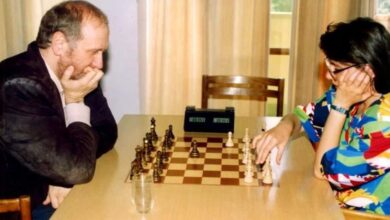What are the new Dexa scan tests that will determine Indian cricketers’ fitness levels?

Having short-led 20 players who will be in the scheme of things for the 50-over World Cup to be held later this year, the Board of Control for Cricket in India (BCCI) has decided to bring in customized training methods and protocols for each player.
In a review meeting of the team’s 2022 T20 World Cup debacle held in Mumbai that was attended BCCI president Roger Binny, secretary Jay Shah, captain Rohit Sharma, head coach Rahul Dravid and NCA head of cricket VVS Laxman, the board has also re-introduced Yo-Yo test and Dexa scan results as criteria for selection. There will be a customised roadmap for each player to follow at all times, including during his stint with the IPL franchise, in the summer preceding the World Cup.
The Yo-Yo test is not new to the India team as it was first brought in ahead of the 2019 World Cup during the Virat Kohli-Ravi Shastri era.
Initially it was not well received the players as the likes of Ambati Rayudu, Suresh Raina, Prithvi Shaw, Varun Chakravarthy, Sanju Samson and Mohammed Shami had all failed to clear the Yo-Yo test at different times.
But once players began to see the difference it made on the field, especially with regards to agility and movement, they increased the desired Yo-Yo test score from 16.1 to 17. However, in the post-pandemic world, with Covid protocols in place, the team opted for a 2km run (under 7.30 mins) test which was used as a fitness parameter.
Now with several of the key players picking up injuries despite being rested adequately, the board has gone back to the Yo-Yo tests. In the past, players had to clear the Yo-Yo test score of 17. “You are talking business if it is 18 for batters and 19 for fast bowlers,” Ramji Srinivasan, the former strength and conditioning coach of the Indian team that won the World Cup in 2011 and Champions Trophy in 2013 said. “Things have evolved and you have to go with the trend. There are parameters, so just relying on Yo-Yo will not do. A skill-based programme should also be included,” Ramji said.
According to Ramji, the Dexa scan tests are something he recommended to the BCCI and the NCA in 2011 because of the overall increase in the number of matches being played in a year. Through Dexa tests, the trainers will be able to measure body fat percentage, lean muscle mass, water content and bone density.
“It helps you understand where the fat is and whether the training methods are yielding the result. It is all linked to a cycle. It is part of testing protocols which should have become mandatory long back. Some teams have been doing this for 10 years. It is a fool-proof method. Skinfold can be manipulated and each time different results can show up. But with Dexa it will be uniform and the data will be used for the future as well,” Ramji said.
Footballers’ ideal body fat 5-8 pc; for cricketers, 10 pc
It is understood that the BCCI has gone for a more scientific method in the wake of certain players hiding niggles and rushing back from injuries. This will not just put the onus on players, but also bring accountability from the trainers as well. “For example the fat content has to be less than 10 per cent. If it is in 10-12, you are borderline fit. Football players will be between 5-8 per cent. But cricketers can stretch it to 10. Less fat means more muscle mass and it can give you more strength, power, speed, agility and less tension on the joints, less stress on muscles. This way you can prevent back and knee injuries,” Ramji added.
Incidentally, a back injury ruled Jasprit Bumrah out of the T20 World Cup, while Ravindra Jadeja missed it because of knee injury. With a more customized plan in place, each player will now have his own routine, diet programme and training method to follow depending on what the Dexa scan results show.
“Each player having his own program is the way to go. It was the case earlier too,” Ramji said. “What suits one player may not suit the other and it needs to be different and customised and that is one way of preventing injuries.”
Be it at the 2021 T20 World Cup or the recent edition in November 2022, India took the field without its key players and it had a telling effect. Especially in Australia, India were without Bumrah and Jadeja – two players who would have walked into the playing XI straight away – as they rushed with last minute changes. It meant India went back to Shami, who was not even part of their T20 World Cup plans till September for the tournament played in October-November.
And then off-late there have been cases of players frequently breaking down due to fitness related injuries. Deepak Chahar and Washington Sundar are a case in point where the duo missed a major chunk of matches last year due to various injuries at different points. Having failed to win an ICC title since claiming the Champions Trophy in 2013, the BCCI has turned its attention towards the 50-over World Cup which will be hosted in India.
For a team that has a huge depth of talent pool and has the glamour of the IPL, a failure to win the World Cup on home soil will not be received well. In that context, India are aware that to put a winning combination in place, they need to have a fully-fit squad available and hence they seem to have pressed the action button bringing in the Yo-Yo test and the Dexa scan tests.






